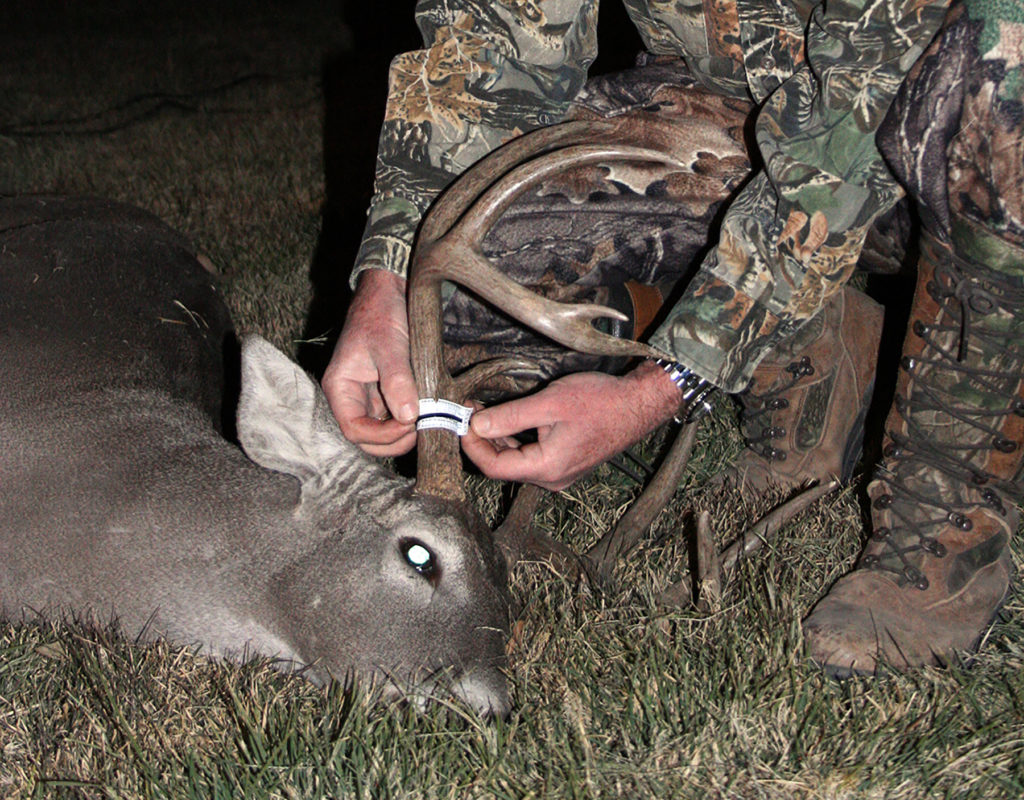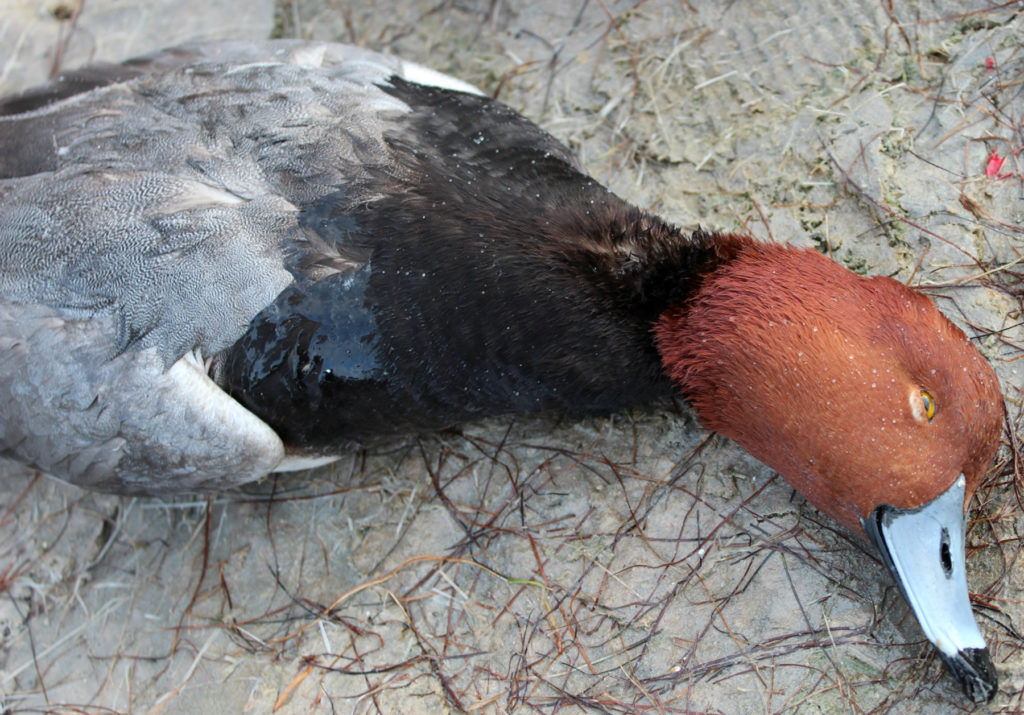Texas’ Wildlife Management Areas are as distinct and varied as the different regions of the state where they are located. This network of public land is managed by the Texas Parks & Wildlife Department, which uses the hundreds of thousands of combined acres for a number of purposes.
Mostly, the WMA system serves as a recreational outlet for those living in urban centers that don’t have regular access to private lands of their own. The WMAs also are educational centers that offer research opportunities aimed at a number of ongoing projects and natural resources.
In addition to those great aspects of these natural habitats, they also are open to hunting for species ranging from deer, turkeys and hogs to ducks, squirrels and rabbits. Most of these hunts are extremely affordable for those who are drawn for the bigger species, while there also remain open public hunting options for those who possess an Annual Public Hunting permit. That costs $48 and allows access on a statewide level to participating WMAs.
Here’s a look at the top WMA for public hunting in the Post Oak Savannah ecoregion, less than two hours from the Dallas-Fort Worth Metroplex.

Gus Engeling Wildlife Management Area
Engeling, at about 10,000 acres, sits just north of the unincorporated community of Tennessee Colony and is among the most diverse land holdings overseen by TPWD. The WMA in northwest Anderson County was purchased during the 1950s under the Pittman-Robertson Act using Wildlife Restoration Program funds. The wildlife research and demonstration area for the Post Oak Savannah includes 2,000 acres of hardwood bottomland floodplain and almost 500 acres of natural watercourses, 350 acres of wetlands: marshes and swamps and nearly 300 acres of sphagnum moss bogs.
The WMA also is home to more than 1,000 plant species and a host of wildlife – including species of 37 mammals, 156 birds, 54 reptiles and amphibians, and 57 fish.
The area originally was named the Derden Wildlife Management Area after Milze L. Derden, from whom much of the land was purchased. The area was renamed in 1952 after Gus A. Engeling, the first biologist assigned to the area, was shot and killed by a poacher on Dec. 13, 1951.
As with other WMAs, the initial goal and intended purpose at Engeling was to serve as a wildlife research and demonstration area where biologists could study and evaluate wildlife and habitat management practices. Starting in the 1990s, the majority of staff duties shifted from research to public use activities and development, according to TPWD. The agency’s Wildlife Division has a number of priorities for the WMA, namely developing and managing wildlife habitats and populations of indigenous species, providing areas to demonstrate habitat development and wildlife management practices to landowners and other interested groups, and also providing public hunting frameworks.
Among the notable research projects conducted at Engeling are white-tailed deer aging techniques, factors affecting white-tailed deer fawn survival, comparisons of feeding habits between white-tailed deer and cattle, and site-specific competition between feral hogs and white-tailed deer.
In addition to valuable research, the WMA also features a variety of good hunting opportunities, with some small game hunts open to those who possess an Annual Public Hunting permit. Engeling offers a variety of good deer hunting options through the public drawing system. The WMA also doesn’t have as much competition for those hunts, with hundreds of applicants typically, rather than thousands as with other hot spots. Engeling has drawn permits for archery buck hunts, as well as gun hunts for bucks, spikes and does. It also features youth-only buck hunts, in addition to spike and antlerless hunts, which all are free for youngsters who are drawn.
Jeff Gunnels, area manager for Engeling, said many of the hunting opportunities are designed with youth hunters in mind, especially when discussing introducing them to successful outings.
“We start out with dove season in September, planting dove fields, and then move right into squirrel hunting, which has become a big pursuit,” he said. “There’s some of the best squirrel hunting around in this part of the state. Then after that, I move right into my deer hunting. We start with kids first, giving those youths the first crack at the deer. All of our big WMAs try to have a big hunt on that first statewide youth-only weekend. And then this year we moved our youth either sex deer hunts to the rut, hoping that we can give those kids an opportunity to kill a pretty good deer, which they did. We had a 137 (Boone & Crockett) and change clean 8 (point), and a 136 and change clean 8 that were the two best deer our youth hunters killed this year.”
Gunnels noted that management of the deer population at Engeling centers around maintaining a healthy herd, an aspect with which hunting plays a complementary role.
“Just like any other WMA property, our hunts are designed to meet our buck harvest and doe harvest objectives, while we manage for quality animals,” he said. “Hunters are included in those objectives and we’ve multiple avenues of allowing hunters to take some good bucks and help meet our wildlife management targets.”
“We focus on quality deer management and most of our bucks get killed at 3 and 4 years old. We try to keep a balanced age structure and we do have some good bucks that reach 5 or 6.”
Some hunters may not readily equate big bucks with public hunts, but as with every WMA across the state, there are many good deer taken annually, Gunnels noted. Those nice whitetails also come much cheaper than almost every other hunt.
“Most of our hunters, if they come in on one of our five-day, $130 public hunts and shoot a 130-class buck, that’s the biggest deer they’ll take in their life,” Gunnels said. “Trophy is in the eye of the beholder, but for many hunters, that’s still a great deer on a fair-chase hunt. It’s also not uncommon for us when we have some good range years where we kill bucks in the 150s.”

As with other Post Oak Savannah and Pineywoods counties, Engeling features antler restrictions, though those at the WMA offer a slight variation.
“We do have antler restrictions at Engeling and we try to keep it simple as we have standardized those frameworks at a lot of our WMAs,” Gunnels said. “We use inside spread that equals or exceeds the spread ear tips. It’s not like the 13-inch wide restriction that we put in the countywide regulations. It’s actually a little bigger because most of those deer ear tips will be 14 or 15 inches. That means by 3½ most of those bucks are legal for harvest. It still protects the bulk our yearling and 2½-year-old bucks.”
Alan Cain, white-tailed deer program leader for TPWD, has noted that the overall antler restriction regulations have been extremely beneficial to the affected deer populations.
“Antler-restriction regulations (in the Post Oak and Pineywoods) continue to improve the buck age structure in these regions and is reflected in the annual harvest, where age and antler surveys conducted by TPWD wildlife biologists indicate 53 percent of bucks are 3½ years of age or older in the Post Oak Savannah and 64 percent in the Pineywoods,” Cain noted. “Despite having some of the highest hunter densities in the state, these regions continue to produce good quality deer.”
Gunnels said that in terms of deer hunting, Engeling is an ongoing case study in recruitment of hunters, something that’s important to the pursuit in a state such as Texas.
“Our objectives through hunting at all of our WMAs is to introduce the pursuit to new and inexperienced hunters, which is one reason why we focus on so many youths hunts,” he noted. “We actually get a lot of hunters on our drawn deer hunts that are inexperienced, so that provides a good way to teach those folks about everything from field dressing to showing them proper deer management. The goal is that hopefully those hunters have a positive experience and then carry on with hunting and recruit family and friends to take part in the future. It’s important to continue that hunting tradition.”
In an area so rich with wildlife, it could be tough to ensure that each hunter group has adequate access and opportunity. However, that’s something that Gunnels and his staff keep a keen eye on, allowing a time and place for a variety of hunting pursuits.
“We manage Gus Engeling and all of our WMAs by balancing the public use of those lands. We’re not just focused on deer,” Gunnels said. “We’re doing habitat restoration and turkey restoration and a host of other management projects designed with the whole landscape in mind. We try to balance our deer hunting with our waterfowl hunting. We have a lot of people who enjoy duck hunting in this part of the world. For example, here at Engeling we plan waterfowl hunts on Tuesdays and Saturdays and then I’m going to turn around and have deer hunts on Wednesday, Thursday, Friday. The waterfowl hunting is down in the creek and in the marshes, so it’s really not going to impact the deer, but I can balance the different user groups.”
In addition to attractive small game and deer hunting options, Engeling also faces the growing menace that is the feral hog. Engeling offers E-postcard hunts for hogs, with 200 permits for the invasive species last season. It should be noted that all drawn deer hunts also feature unlimited feral hogs, which is a bonus should the deer hunting prove tough.
“We’re also like every other landowner in Texas, trying to control feral hogs,” Gunnels said. “That’s a constant problem and pretty much a statewide issue.”
While large-scale flooding hasn’t been as much of an issue at Engeling, Gunnels said that nearby Richland Creek WMA, which sits just east of Richland-Chambers Reservoir, has been severely impacted.
“Richland Creek WMA is a larger property than Engeling at about 14,000 acres, but about 13,700 of that is in the flood plain,” he said. “We had about 18 months of continuous flooding and that wiped out two years of fawn crops and two hunting seasons. We were killing 150-class deer every year over there but that deer herd has just been decimated. It pushed all the deer out of the river bottoms and the neighbors have had some of the best hunting they’ve ever had.”
Cain echoed Gunnels on the sentiment about deer movement amid flooding, noting that hunters should be vigilant in being good stewards of what ultimately is a natural resource.
“One benefit is that those wise old bucks that have avoided hunters for years in those dense river-bottom thickets may be more visible and present a greater opportunity to harvest one of these trophies,” he said. “Hunters should enjoy these opportunities but be mindful not to over harvest the deer population that resulted from a temporary increase due to flooding.”
Public hunting checklist
Wildlife Management Areas have rules and regulations for hunting not required on private property. Hunters must possess a valid hunting license, the appropriate tags and stamps, as well as the proper public hunting permit. Permits include: Annual Public Hunting Permit (APH), computer drawn Special Permits, and the Regular Permit, which allows daily small game hunting on some areas. Hunters 16 years of age and younger are not required to have a hunting permit, but must have a hunting license and be supervised by a licensed, permitted adult, 18 or older. Hunters and non-hunters must wear hunter orange during daylight hours at any time when firearm hunting for any species authorized on a unit (except turkeys, waterfowl and dove).




















